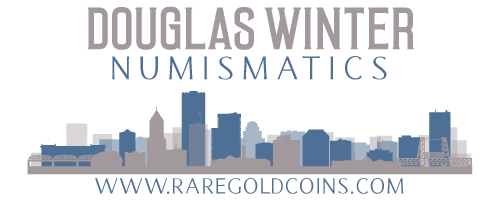Some Recent Observations From A Coin Show Perspective
/Having just come from the Philadelphia Whitman Coin Expo show and, the week before this, the Long Beach show, I feel pretty qualified to make some market observations. Without further ado, I'd like to share them with you. 1. There Are Too Many Coin Shows Right Now. I'm sure I'm not going to make any friends with coin show promoters for saying this but with Long Beach occurring last week, Philly this week and the St. Louis show next week, this is too many coin shows in a short period of time. I saw few fresh coins in Philadelphia because I looked at many dealer's coins in Long Beach and the thought of turning around next week and going to St. Louis...uh, no thanks. The market just can't support this many shows and this is why you are seeing many formerly good regional three and four day events beginning to die rapid deaths.
2. Buying Nice Coins Is Tough, Tough, Tough. If you thought it was hard two or three years ago to buy nice coins at shows, it is as tough now as its ever been; maybe tougher. I've heard dealers all of all sizes and shapes complain how hard it is to find interesting fresh material at recent shows. I was lucky and I had an amazing ANA show with lots and lots of great new coins to offer DWN clients. But it is a real grind to find coins now and, clearly, the good stuff is going off the market and staying there.
3. Everyone Wants to Buy Type One Double Eagles. There are many firms and individual dealers (myself included) who are very active buyers right now of Type One double eagles. At the Philadelphia show I saw almost nothing for sale other than the usual motley assortment of Uncirculated S.S. Central America 1857-S , a few lower grade common dates and the odd overpriced rarity here and there. This is clearly an extremely popular area of the market and coins in the $2,000-15,000+ price range are exceptionally popular right now.
4. And CC Double Eagles Too. You can add $2,000-10,000+ Carson City double eagles to this list as well. They are most definitely in strong demand and if the coins are properly priced (or even just a hair too expensive) they are easy sellers. Even big money coins like 1870-CC double eagles are beginning to sell again and I am aware of at least two EF examples changing hands since ANA. If you have any nice CC double eagles for sale, please contact me as I'd like to buy them from you!
5. Nice New Orleans Gold Has Disappeared. Where has all the nice New Orleans gold gone? Good question. The last few months have seen very, very few interesting New Orleans gold coins available and the few choice or rare pieces that I have had in stock have sold quickly. Clearly, this is an area of the market that is very active.
6. And Dahlonega Gold Also. I think you can safely add choice, original Dahlonega gold in all denominations to the "where the heck are the coins?" list. I can generally only find two or three decent D mint coins at a major show and they seem to sell very quickly when I list them on my website.
7. Coin Pricing Is a Total Disaster. I've mentioned this a number of times but I am finding it more and more of a hassle that coin pricing is such out of touch with reality. What typically happens is that one very low quality rare coin trades cheaply at auction and Trends whacks the price for the issue down. This has recently happened with rare, desirable coins like the 1796 No Stars and 1808 quarter eagles and the 1795 eagle. I look at this as, in its own way, as big a concern in the coin market as the doctoring issue. One reason why good coins aren't being sold is that pricing doesn't reflect the real value of choice, high end pieces. Fix this problem and you will fix the lack of supply that is hurting the market right now. Don't fix it and new buyers will be more interested in purchasing MS64 Saints than "real" coins.
8. I'm Not Seeing Many PCGS "Secure" or "Plus" Coins. Either the new PCGS Secure and Plus program isn't working or its working so incredibly well that the coins in these holders never make it to the market, But I am not seeing many of these coins and I continue to feel that CAC has really set the pace in the high end segment of the market. It remains hard to price PCGS Plus and Secure coins when so few trade at auctions or at shows.
9. The Birth of the "Lucky Charms" Grade. I wish I was clever enough to have invented this term but, alas, I'm not. But I recently have seen coins graded "AU58+*CAC" and these pieces with all the attached symbols and stickers are now known as "Lucky Charms" coins because they seem to have imported their verbiage from the shapes found in this cereal. Magically delicious, no?











